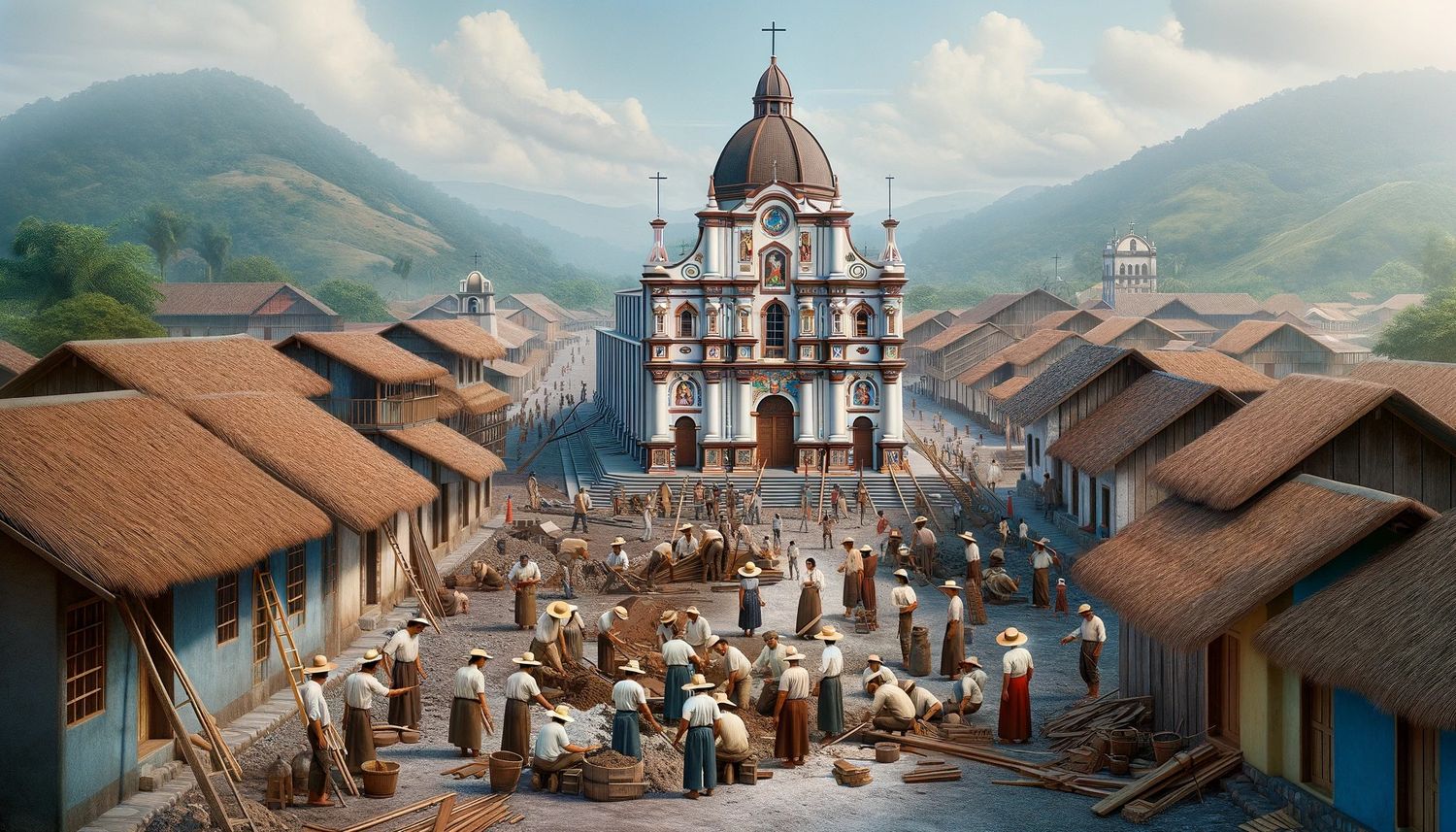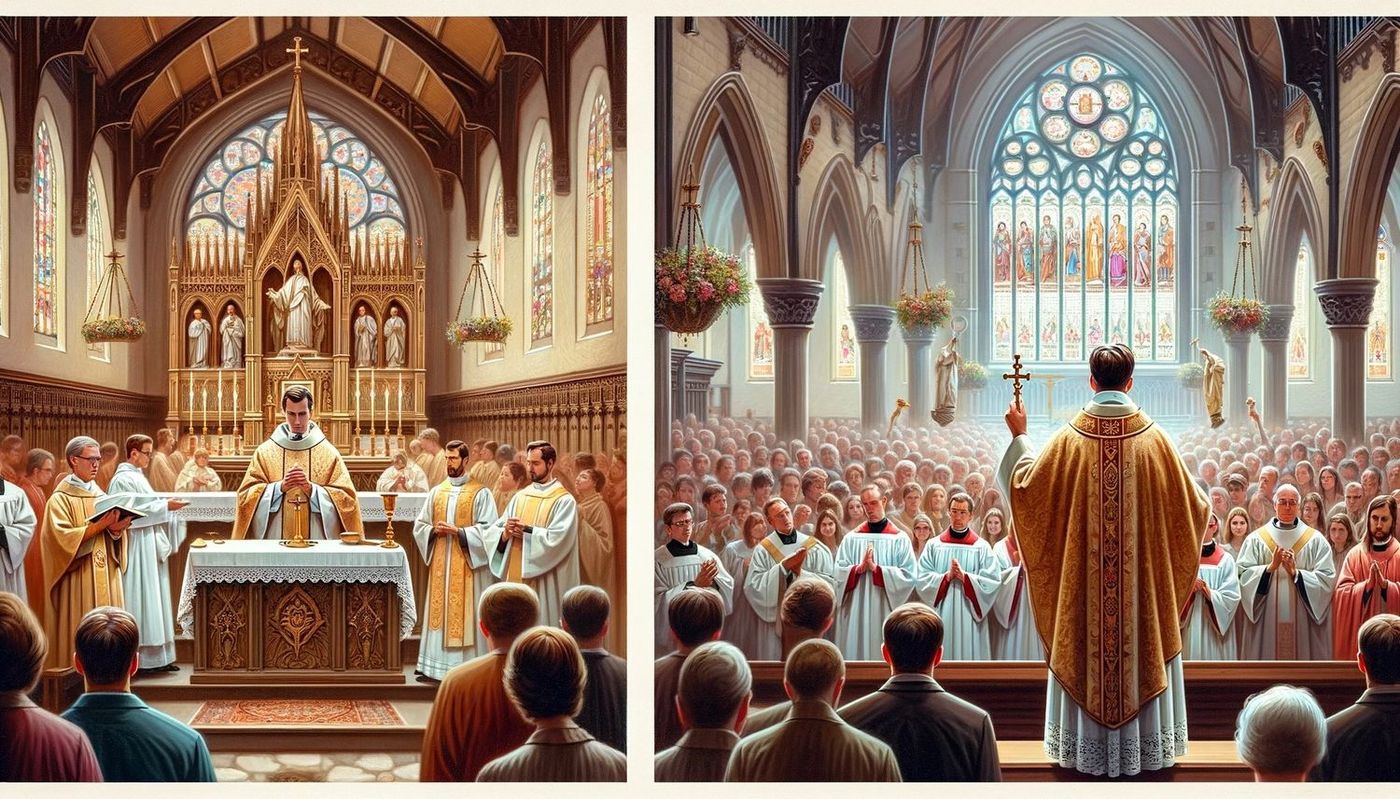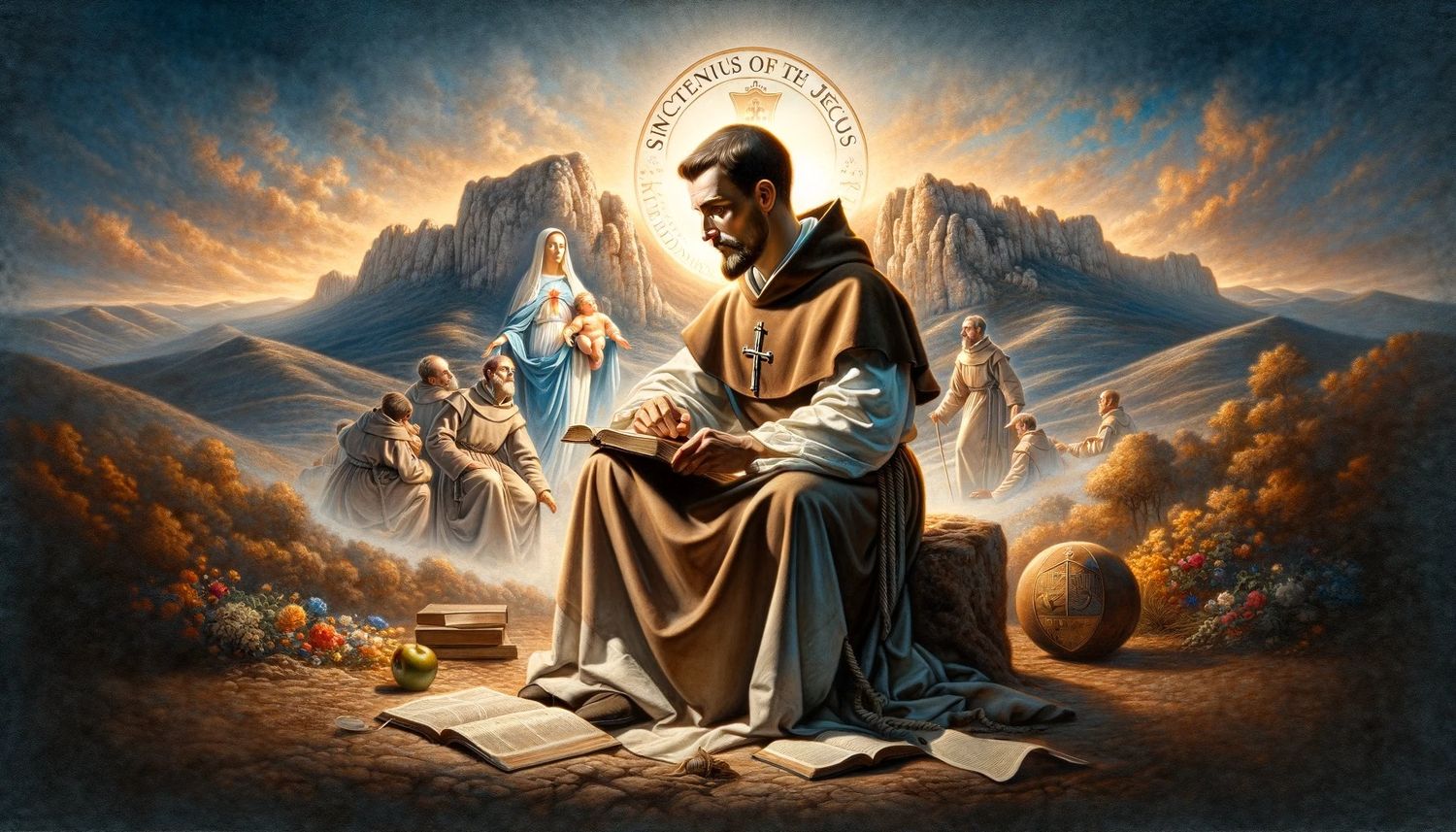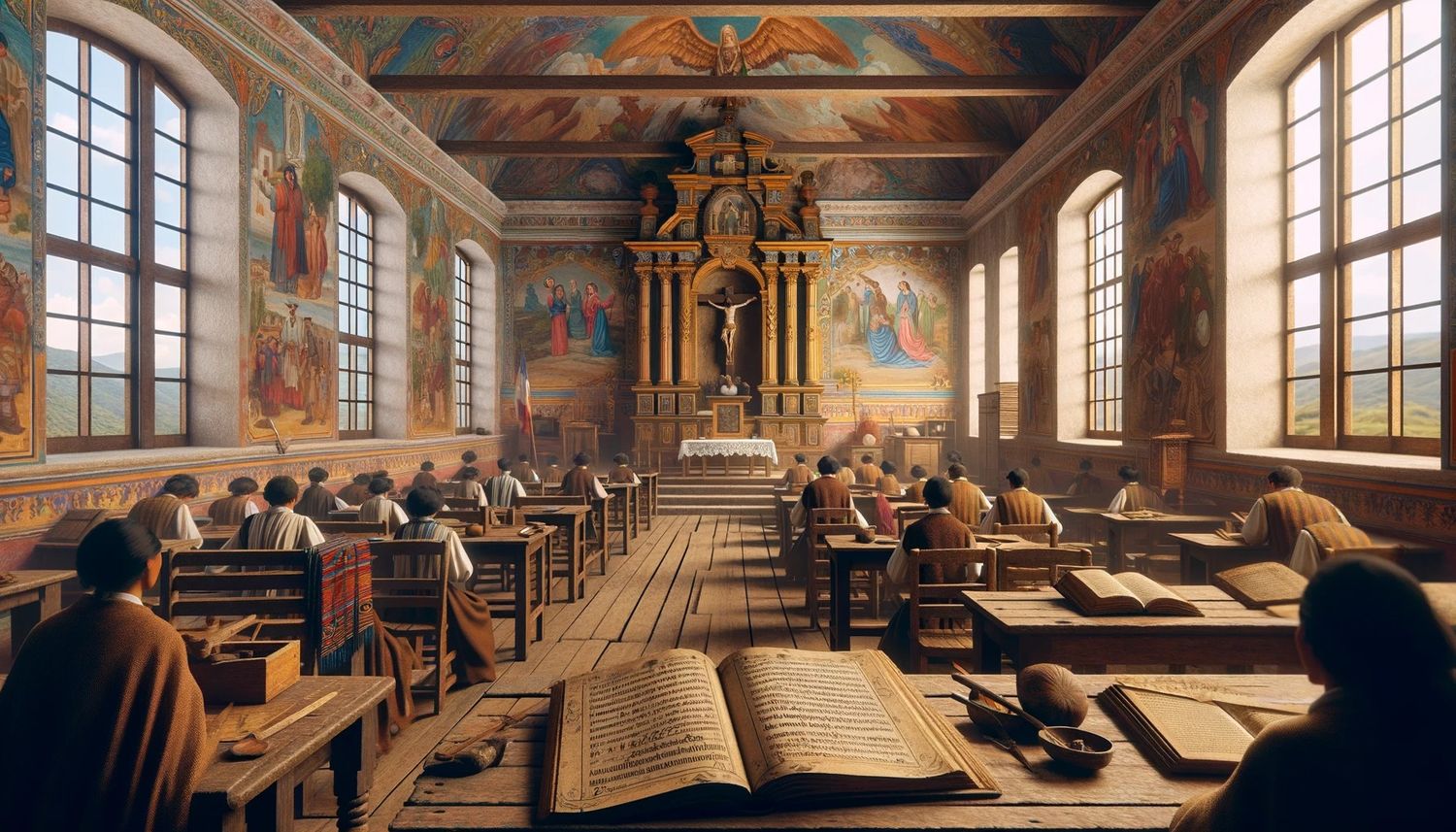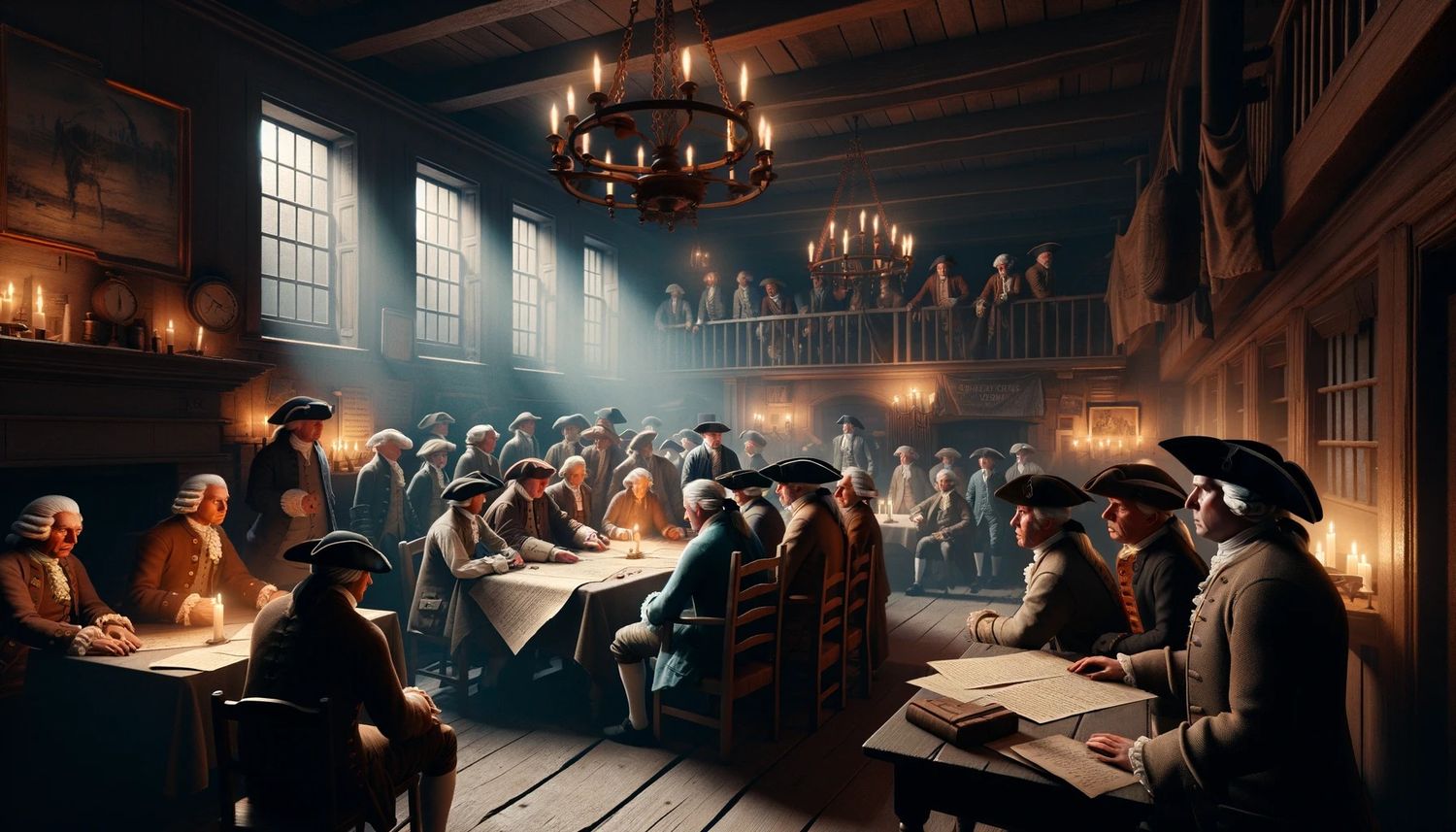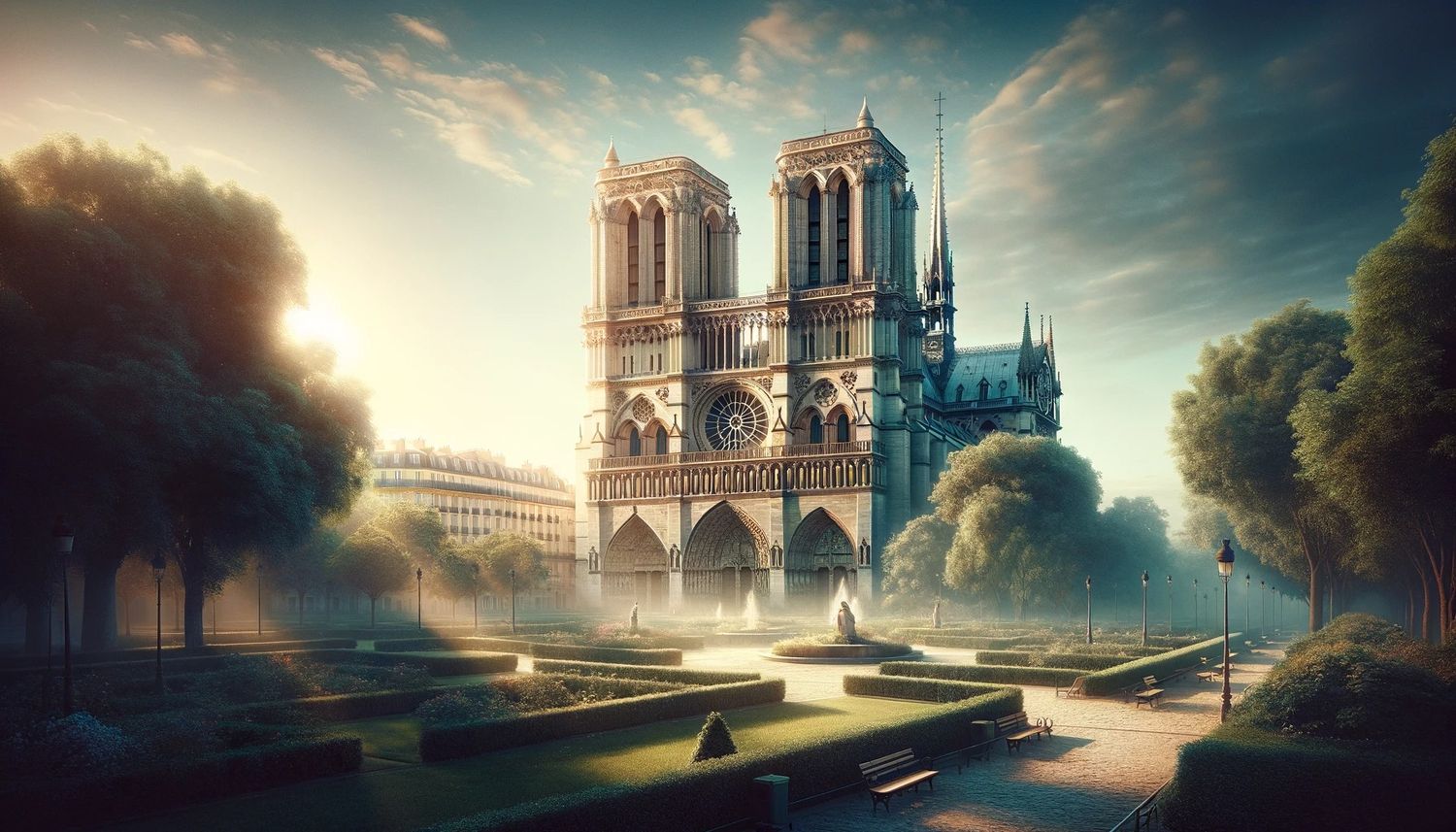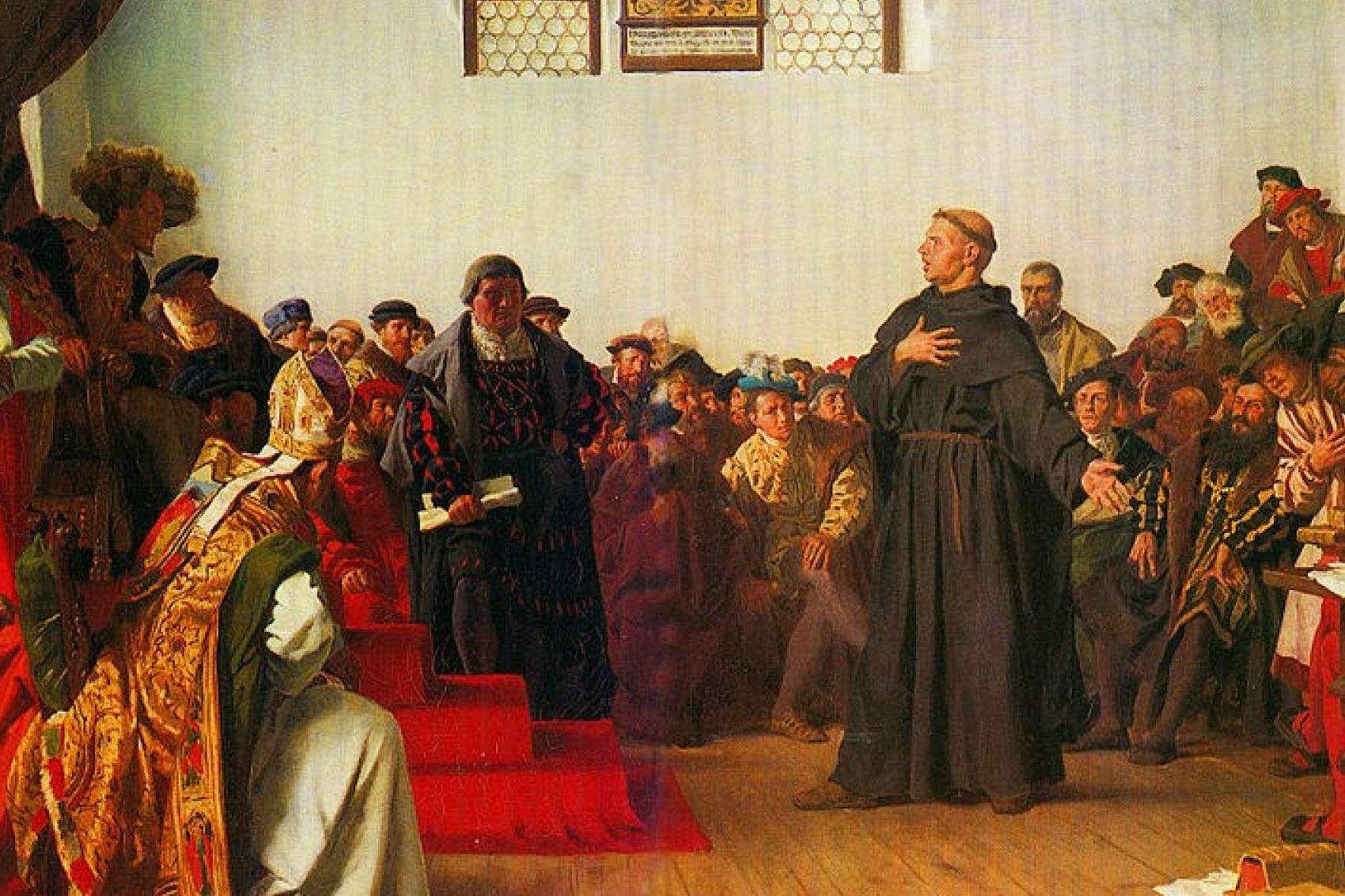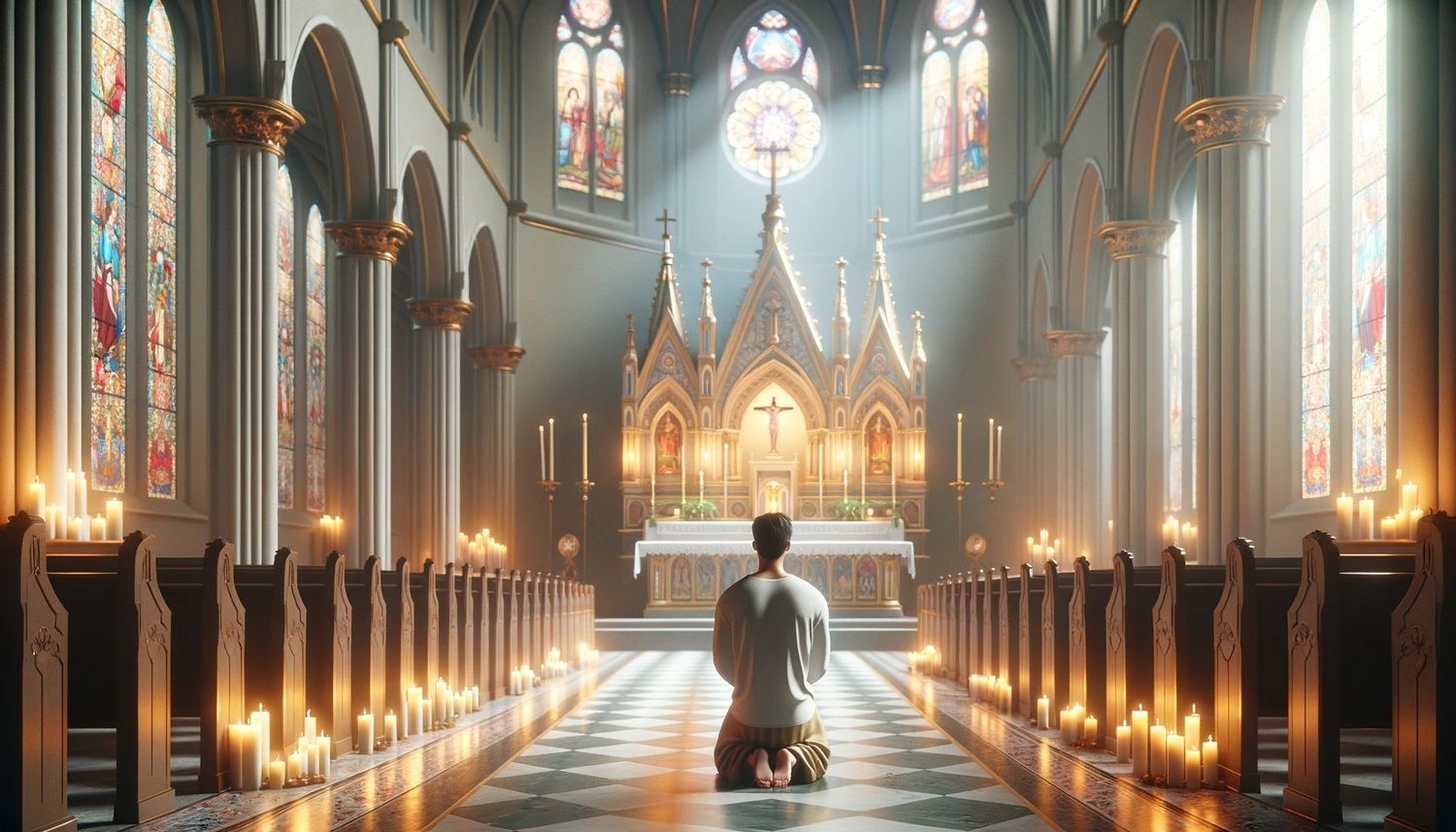Home>Theology and Spirituality>How Did The Conflict With Galileo Between Science And Catholicism End?


Theology and Spirituality
How Did The Conflict With Galileo Between Science And Catholicism End?
Published: February 17, 2024
Jason DeRose, Managing Editor at Christian.net, uses his expertise in religion and journalism to deepen understanding of faith's societal impacts. His editorial leadership, coupled with a strong academic background, enriches the platform’s diverse content, earning him recognition in both journalism and religious circles.
Discover how the conflict between Galileo and Catholicism was resolved, and the impact on theology and spirituality. Explore the historical reconciliation between science and religion.
(Many of the links in this article redirect to a specific reviewed product. Your purchase of these products through affiliate links helps to generate commission for Christian.net, at no extra cost. Learn more)
Table of Contents
Introduction
The conflict between science and religion has been a topic of intense debate throughout history. One of the most famous clashes occurred between the renowned astronomer Galileo Galilei and the Catholic Church in the 17th century. This pivotal moment in history marked a significant struggle between scientific discovery and religious orthodoxy, shedding light on the complexities of the relationship between faith and reason.
The controversy surrounding Galileo's astronomical findings and his subsequent clash with the Catholic Church serves as a compelling case study of the tensions between empirical evidence and religious doctrine. This conflict not only captivated the intellectual circles of the time but also continues to resonate in contemporary discussions about the intersection of science, spirituality, and institutional authority.
As we delve into the intricate details of this historical confrontation, we will explore the events that led to the trial of Galileo, the publication of his influential work "Dialogue Concerning the Two Chief World Systems," and the eventual resolution of the conflict. By examining the multifaceted dynamics at play during this tumultuous period, we can gain valuable insights into the complexities of reconciling scientific progress with deeply held religious beliefs.
The story of Galileo's clash with the Catholic Church is a testament to the enduring struggle to reconcile empirical observations with theological interpretations. It serves as a poignant reminder of the challenges inherent in navigating the boundaries between scientific inquiry and religious authority. Through a comprehensive exploration of this pivotal historical episode, we can gain a deeper understanding of the intricate interplay between faith, reason, and the pursuit of knowledge.
The Conflict between Galileo and the Catholic Church
The conflict between Galileo Galilei and the Catholic Church stemmed from the revolutionary astronomical discoveries made by the renowned scientist. Galileo's observations through his telescope provided compelling evidence in support of the heliocentric model proposed by Nicolaus Copernicus, which posited that the Earth revolved around the sun. This contradicted the geocentric model endorsed by the Catholic Church, which placed the Earth at the center of the universe.
Galileo's advocacy for the heliocentric model challenged the prevailing religious orthodoxy, leading to a clash between scientific inquiry and established theological doctrines. The Catholic Church, deeply entrenched in the geocentric worldview, viewed Galileo's findings as a direct affront to the authority of Scripture and sought to suppress his ideas.
The conflict intensified as Galileo's discoveries gained widespread attention, sparking fervent debates within intellectual circles and drawing the ire of ecclesiastical authorities. The clash between empirical evidence and religious tradition underscored the profound tensions between scientific progress and institutionalized belief systems.
Amidst this escalating conflict, Galileo's unwavering commitment to empirical observation and his vocal advocacy for the heliocentric model positioned him as a formidable challenger to the entrenched dogma of the Catholic Church. The collision between these opposing worldviews set the stage for a dramatic confrontation that would reverberate throughout history.
As we delve deeper into the intricacies of this conflict, it becomes evident that the clash between Galileo and the Catholic Church encapsulated the profound struggle between scientific inquiry and religious authority. This pivotal historical episode serves as a poignant reminder of the complexities inherent in navigating the intersections of faith, reason, and the pursuit of knowledge.
The Trial of Galileo
The trial of Galileo Galilei stands as a defining moment in the historical conflict between science and Catholicism. In 1633, Galileo faced the Roman Catholic Inquisition, charged with heresy for his advocacy of the heliocentric model and his writings that supported the Copernican theory. The trial unfolded as a dramatic confrontation between the forces of scientific inquiry and the entrenched authority of the Catholic Church.
Galileo's unwavering commitment to empirical evidence and his bold defense of the heliocentric model positioned him as a formidable challenger to the geocentric worldview upheld by the Church. The trial, conducted by the Roman Catholic Inquisition, symbolized the collision between empirical observation and religious orthodoxy, encapsulating the profound tensions between scientific progress and institutionalized belief systems.
During the trial, Galileo faced intense scrutiny and pressure to recant his support for the heliocentric model. Under the threat of severe consequences, he ultimately renounced his views and was found guilty of heresy. As a result, he was subjected to house arrest for the remainder of his life, marking a poignant moment of suppression for scientific inquiry in the face of religious authority.
The trial of Galileo Galilei serves as a sobering reminder of the complexities inherent in navigating the intersections of faith, reason, and the pursuit of knowledge. It represents a pivotal historical episode that underscores the enduring struggle to reconcile empirical observations with theological interpretations. The trial's outcome reverberated through the annals of history, leaving an indelible mark on the ongoing discourse surrounding the relationship between science and spirituality.
The trial of Galileo, with its profound implications for the trajectory of scientific inquiry and religious authority, remains a poignant testament to the enduring tensions between empirical evidence and entrenched belief systems. It stands as a poignant reminder of the challenges inherent in navigating the boundaries between scientific progress and deeply held religious convictions.
The Dialogue Concerning the Two Chief World Systems
The publication of "Dialogue Concerning the Two Chief World Systems" marked a pivotal moment in the conflict between Galileo and the Catholic Church. This influential work, written by Galileo and published in 1632, presented a compelling dialogue between three characters, Salviati, Sagredo, and Simplicio, discussing the heliocentric and geocentric models of the universe. Through this literary device, Galileo skillfully articulated the scientific evidence supporting the heliocentric model while also addressing the objections raised by proponents of the geocentric worldview.
The dialogue served as a platform for Galileo to expound upon the empirical observations that bolstered the heliocentric model, presenting a persuasive case for the sun-centered arrangement of the cosmos. By weaving together scientific arguments and philosophical reflections within the framework of a fictional conversation, Galileo sought to engage readers in a nuanced exploration of the competing cosmological paradigms.
However, the publication of "Dialogue Concerning the Two Chief World Systems" also ignited further controversy and intensified the animosity between Galileo and the Catholic Church. The character of Simplicio, who espoused the geocentric position, was perceived by some as a thinly veiled caricature of Pope Urban VIII, leading to accusations of disrespect and provocation. This perceived affront to ecclesiastical authority further exacerbated the tensions surrounding Galileo's advocacy for the heliocentric model.
Despite the contentious reception of the dialogue, its impact on the discourse surrounding cosmology and the relationship between science and religion was profound. "Dialogue Concerning the Two Chief World Systems" contributed to the dissemination of Galileo's ideas and played a pivotal role in shaping the intellectual landscape of the time. Its publication sparked fervent debates and prompted a reexamination of entrenched beliefs, underscoring the transformative power of scientific discourse in challenging prevailing orthodoxies.
The dialogue's enduring legacy lies in its role as a catalyst for intellectual inquiry and its enduring influence on the trajectory of scientific thought. Through its innovative narrative structure and rigorous engagement with cosmological principles, "Dialogue Concerning the Two Chief World Systems" stands as a testament to Galileo's unwavering commitment to advancing the frontiers of knowledge and challenging the boundaries of accepted wisdom.
In the wake of the publication of "Dialogue Concerning the Two Chief World Systems," the clash between Galileo and the Catholic Church reached a critical juncture, setting the stage for the eventual resolution of the conflict. This pivotal work not only encapsulated the fervent exchange of ideas between scientific inquiry and religious authority but also left an indelible mark on the ongoing discourse surrounding the intersection of science, spirituality, and institutional power.
The End of the Conflict
The protracted conflict between Galileo and the Catholic Church reached a pivotal turning point in the aftermath of the trial and the publication of "Dialogue Concerning the Two Chief World Systems." Despite the tumultuous events that had transpired, the eventual resolution of the conflict bore testament to the enduring complexities of reconciling scientific inquiry with religious orthodoxy.
Following the trial, Galileo was placed under house arrest, effectively silencing his public advocacy for the heliocentric model. However, the seeds of scientific revolution had already been sown, and Galileo's ideas continued to permeate intellectual discourse, sparking a gradual shift in the prevailing attitudes toward cosmology and empirical observation.
In the years that followed, the tides of intellectual thought began to turn, ushering in a gradual thaw in the rigid opposition to heliocentrism. The pioneering work of astronomers and natural philosophers further bolstered the empirical evidence supporting the heliocentric model, gradually eroding the staunch resistance to this transformative paradigm.
The eventual resolution of the conflict can be attributed to a confluence of factors, including the accumulation of compelling astronomical evidence, the evolving dynamics within the ecclesiastical hierarchy, and the gradual acceptance of empirical observation as a legitimate avenue for understanding the natural world.
As the scientific momentum in support of heliocentrism continued to build, the Catholic Church underwent a gradual reevaluation of its stance on cosmological matters. This shift culminated in the formal revocation of the ban on heliocentric works in the mid-18th century, marking a symbolic acknowledgment of the compatibility between scientific inquiry and religious faith.
The end of the conflict between Galileo and the Catholic Church serves as a testament to the enduring interplay between scientific progress and institutionalized belief systems. It represents a pivotal moment in the historical narrative of the relationship between science and spirituality, underscoring the transformative power of empirical evidence in reshaping entrenched worldviews.
The gradual reconciliation between empirical observation and religious orthodoxy stands as a poignant reminder of the complexities inherent in navigating the intersections of faith, reason, and the pursuit of knowledge. It symbolizes the resilience of scientific inquiry in the face of institutional opposition and serves as a testament to the enduring quest for a harmonious coexistence between scientific exploration and deeply held spiritual convictions.
Conclusion
The conflict between Galileo Galilei and the Catholic Church stands as a poignant testament to the enduring struggle to reconcile scientific inquiry with religious orthodoxy. This historical confrontation, marked by the clash between empirical evidence and entrenched belief systems, encapsulates the profound tensions between the pursuit of knowledge and the preservation of institutional authority.
Galileo's unwavering commitment to empirical observation and his advocacy for the heliocentric model challenged the prevailing geocentric worldview endorsed by the Catholic Church, igniting a fervent debate that reverberated through the annals of history. The trial of Galileo, conducted by the Roman Catholic Inquisition, symbolized the collision between scientific inquiry and religious orthodoxy, underscoring the complexities inherent in navigating the intersections of faith, reason, and the pursuit of knowledge.
The publication of "Dialogue Concerning the Two Chief World Systems" further intensified the animosity between Galileo and the Catholic Church, sparking fervent debates and prompting a reexamination of entrenched beliefs. Despite the contentious reception of the dialogue, its enduring legacy lies in its role as a catalyst for intellectual inquiry and its profound influence on the trajectory of scientific thought.
The eventual resolution of the conflict, marked by a gradual thaw in the rigid opposition to heliocentrism and the formal revocation of the ban on heliocentric works, represents a pivotal moment in the historical narrative of the relationship between science and spirituality. It serves as a poignant reminder of the transformative power of empirical evidence in reshaping entrenched worldviews and the enduring quest for a harmonious coexistence between scientific exploration and deeply held spiritual convictions.
As we reflect on the conflict between Galileo and the Catholic Church, we are confronted with the enduring complexities of reconciling empirical observations with theological interpretations. This historical episode serves as a poignant reminder of the challenges inherent in navigating the boundaries between scientific progress and deeply held religious convictions. It stands as a testament to the resilience of scientific inquiry in the face of institutional opposition and the enduring pursuit of a harmonious coexistence between faith and reason.



